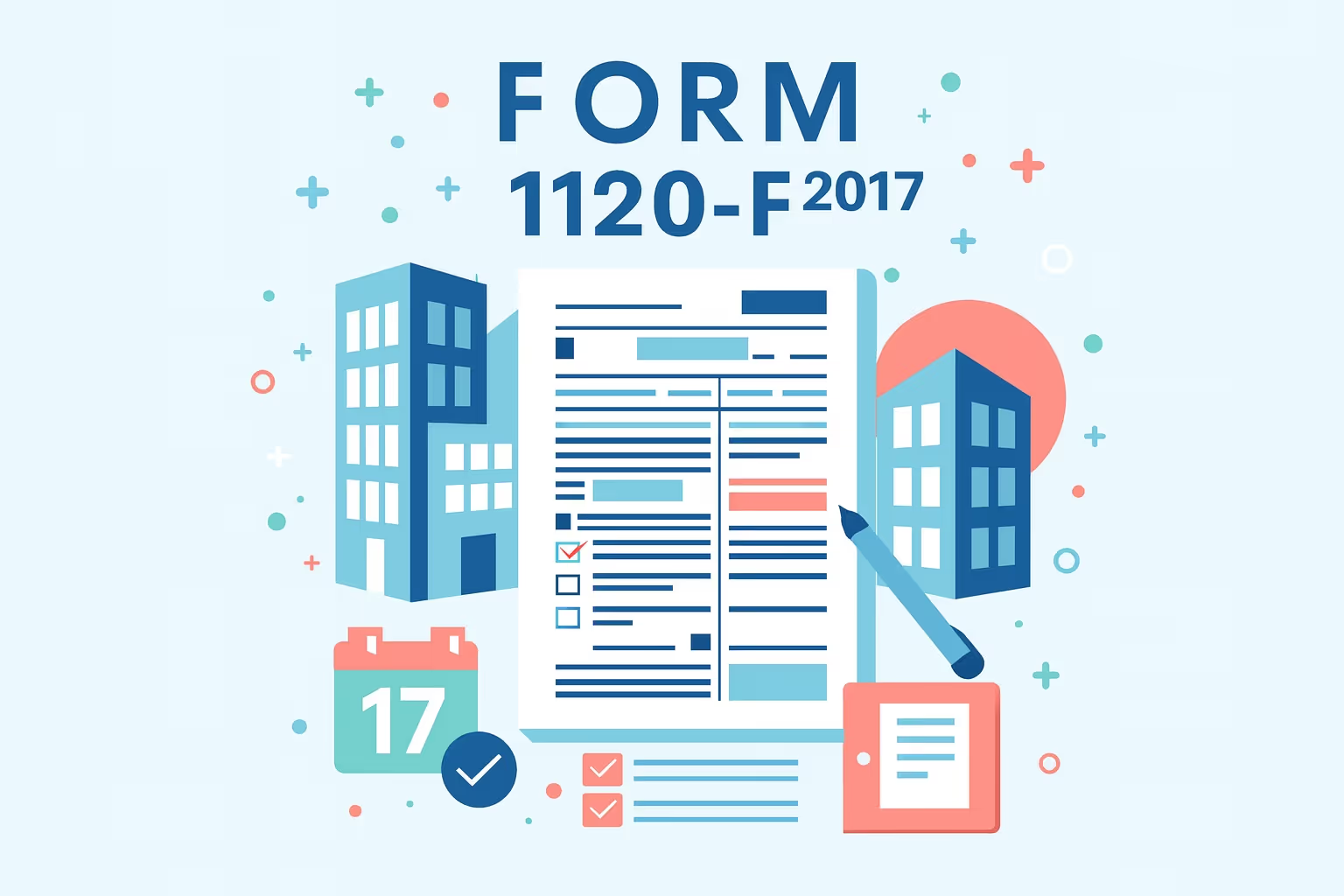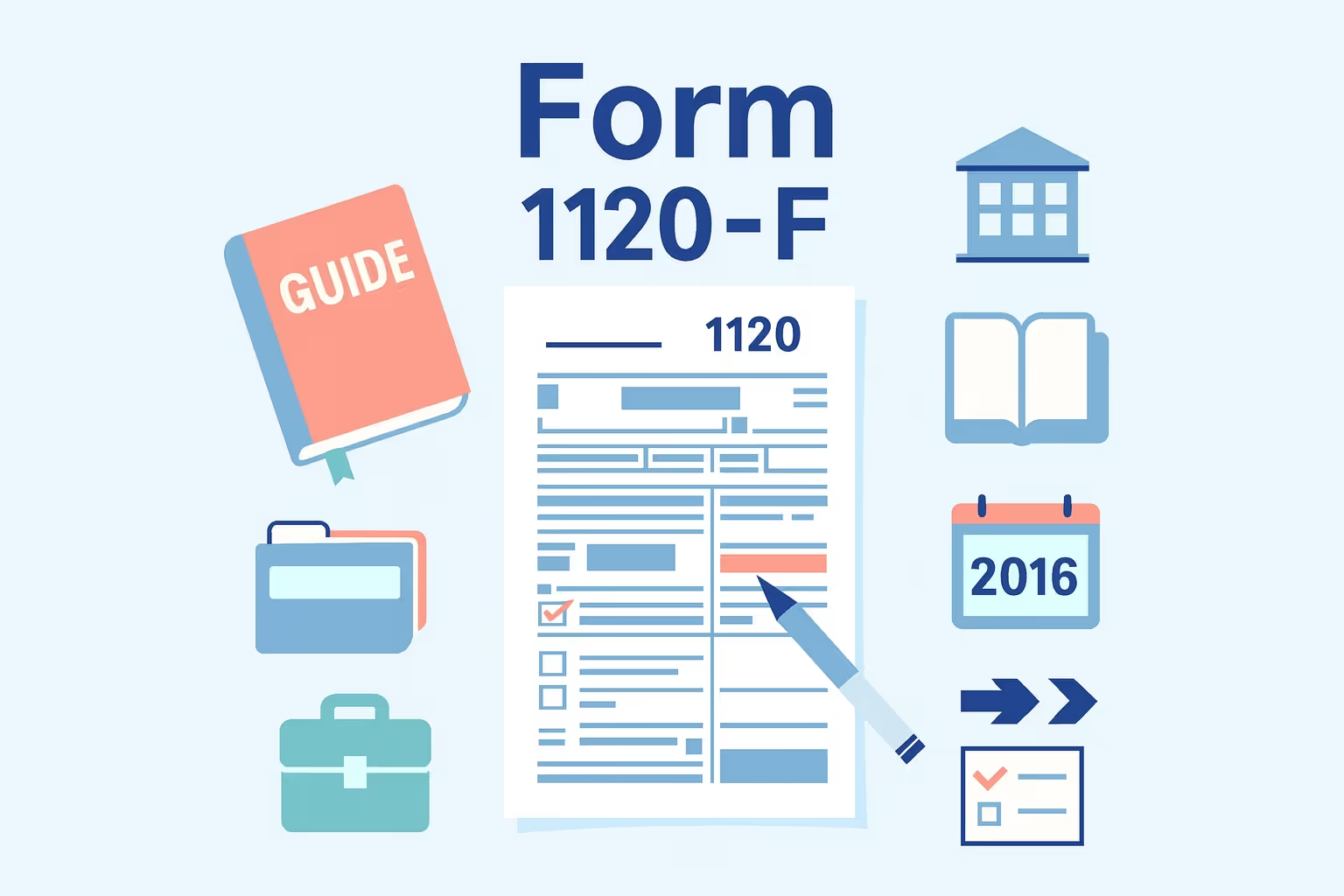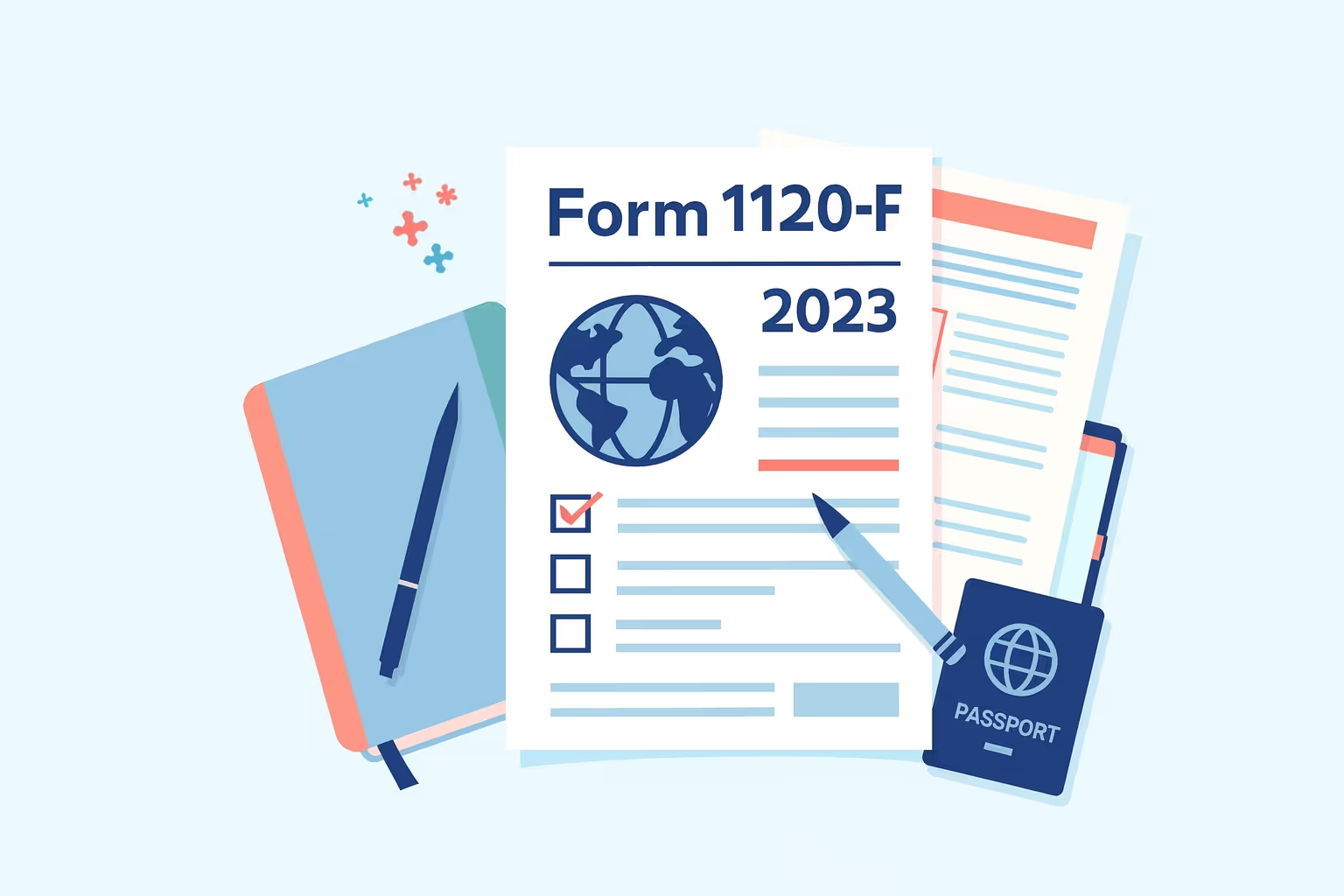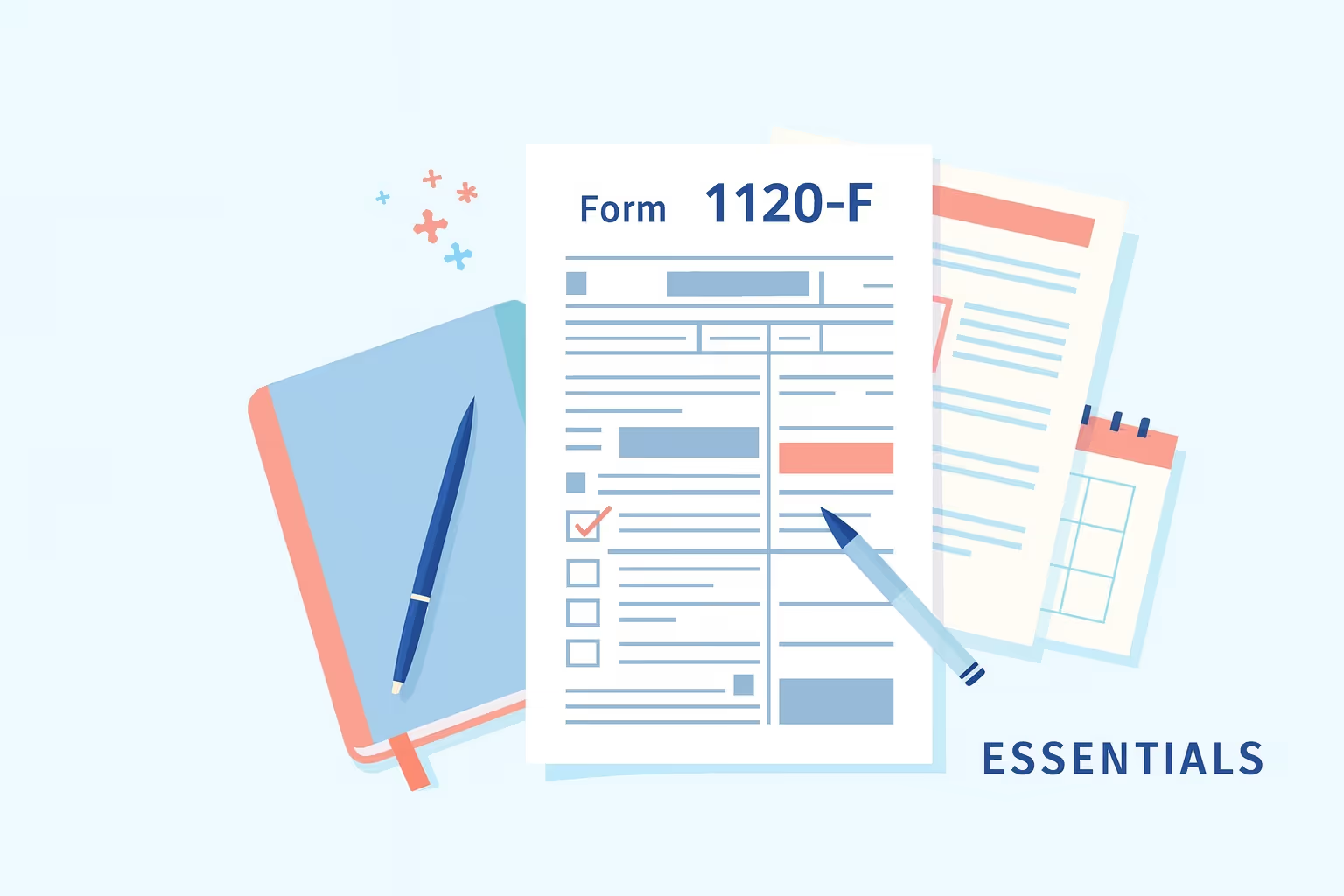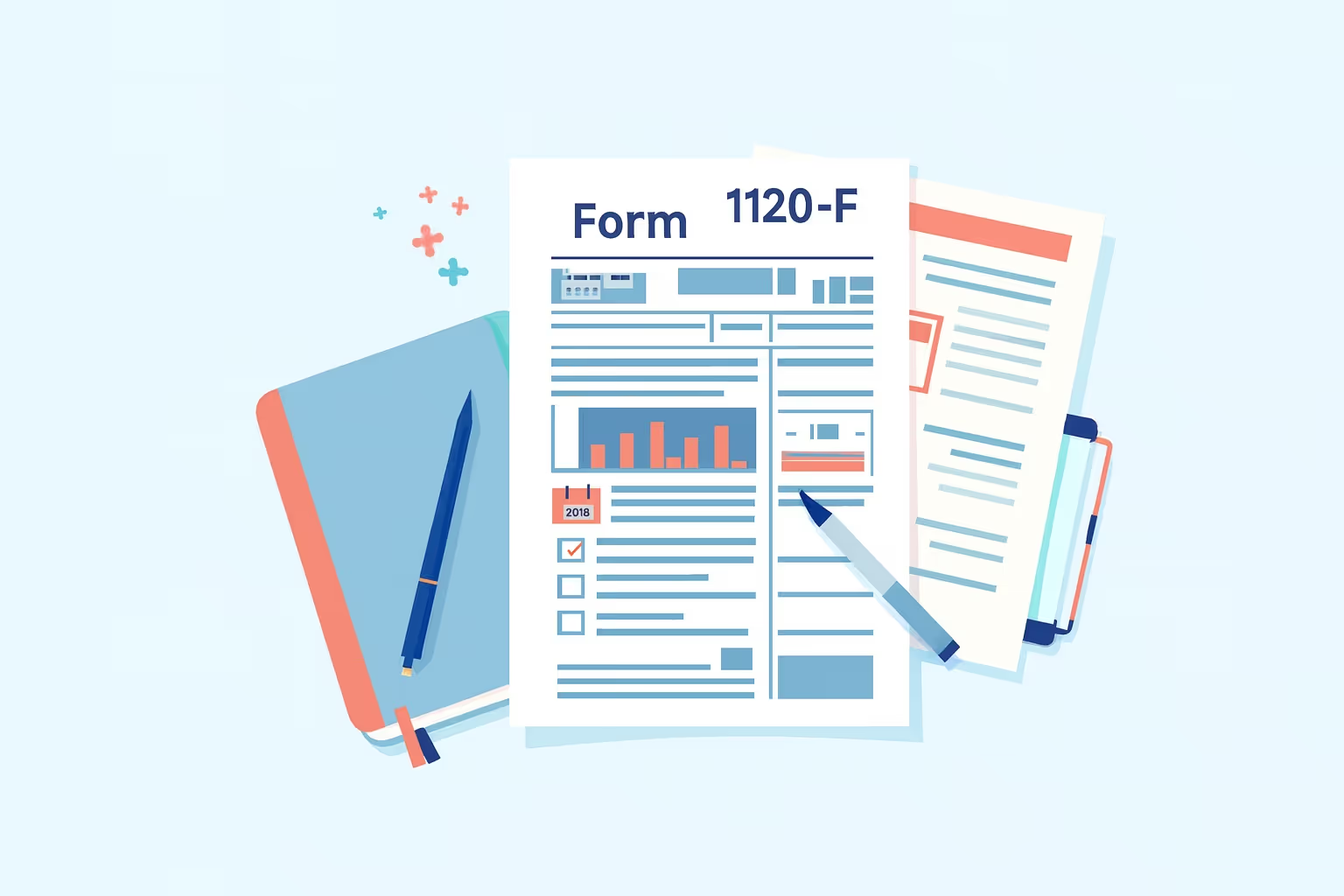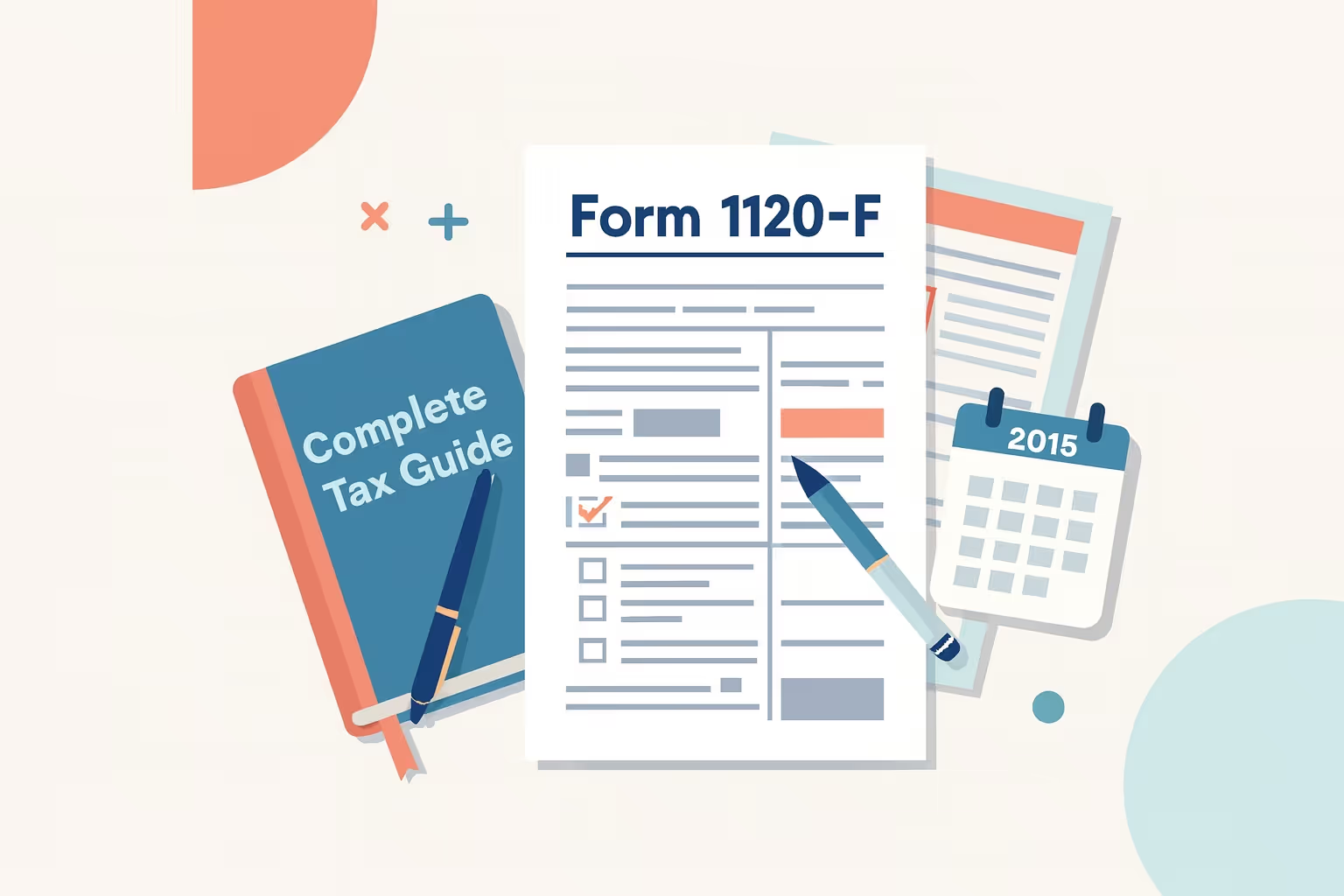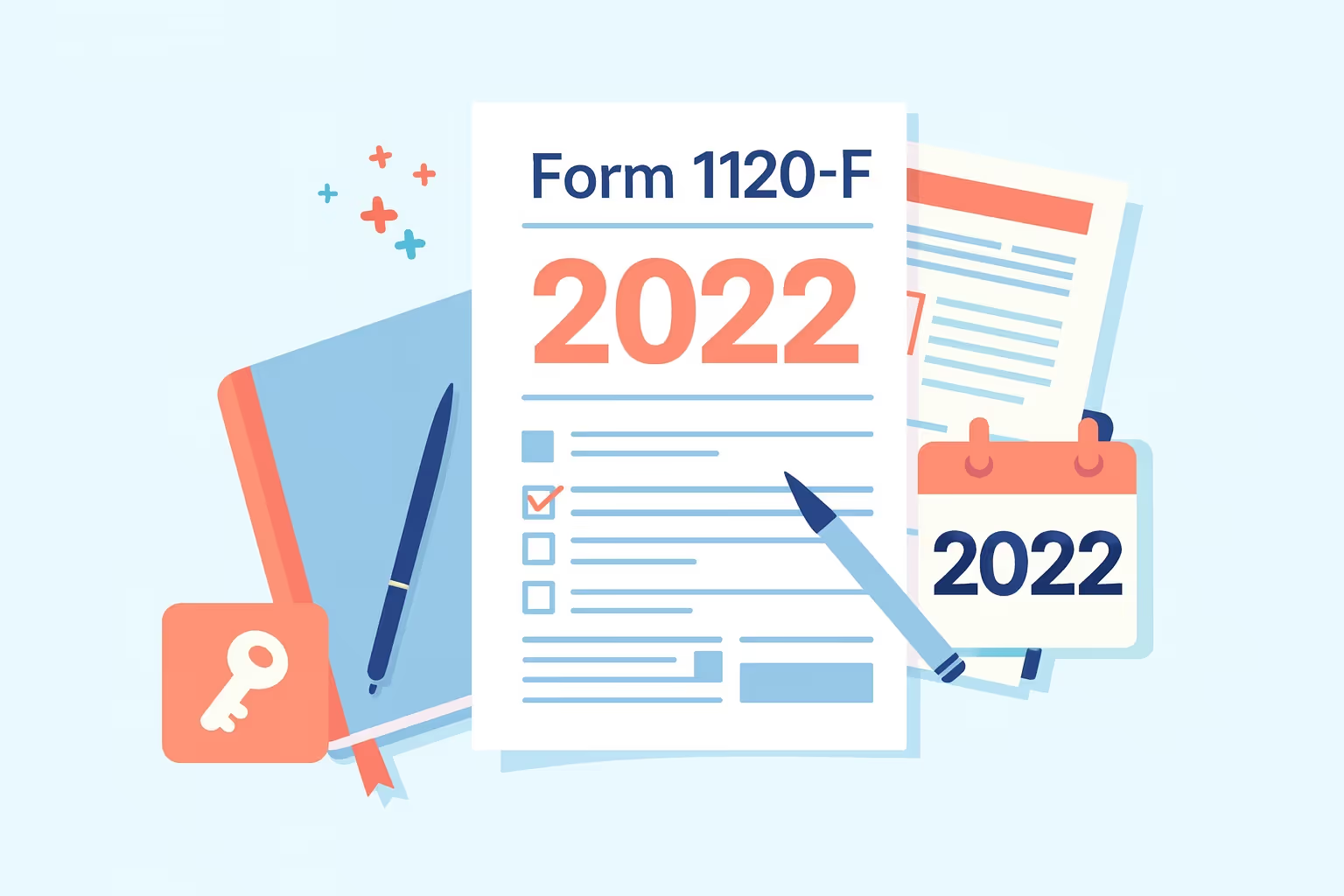
Filing federal tax documents can be challenging, especially for foreign corporations conducting business in the United States. One of the most essential requirements is Form 1120-F, the U.S. Income Tax Return of a Foreign Corporation. This form enables a corporation to report its gross income, deductions, and foreign income taxes, ensuring compliance with the Internal Revenue Code. Even if no income is earned during the tax year, filing may still be required to preserve deductions and avoid complications with future tax liabilities.
For the 2011 tax year, the Internal Revenue Service published specific Form 1120-F 2011 instructions that outlined who must file, how to calculate taxable income, and when deadlines applied. Foreign corporations with effectively connected income from a U.S. trade or business were required to file, along with those claiming treaty benefits or reporting foreign source income. Filing correctly helps corporations avoid penalties, maintain their right to deduct foreign taxes, and correctly determine federal income tax obligations under U.S. law.
This guide explains how to prepare and submit Form 1120-F for foreign corporations, covering filing requirements, step-by-step instructions for completion, and payment details. It also highlights common mistakes, schedules, and how tax treaties or the foreign tax credit may apply. While the rules in this guide are based on the 2011 tax year, the principles remain valuable for understanding how the IRS treats foreign income, foreign taxes paid, and U.S. tax liability in general.
What Is IRS Form 1120-F?
Form 1120-F, officially titled U.S. Income Tax Return of a Foreign Corporation, is required for foreign corporations earning income in the United States or maintaining a U.S. trade or business. It serves as the primary income tax return used to report gross income, deductions, and tax liability for corporations not organized under U.S. law but with operations or financial connections to the country. The Internal Revenue Service relies on this filing to determine the federal income tax amount owed and whether the corporation is eligible for tax credits or deductions.
Foreign corporations may need to file Form 1120-F for several reasons:
- To report effectively connected income from a U.S. trade or business.
- To claim treaty benefits that reduce or eliminate certain income taxes paid to the United States.
- To disclose foreign source income that may impact the calculation of taxable income.
- To preserve the right to deduct foreign taxes and apply a foreign tax credit against U.S. tax liability.
Unlike domestic corporations, foreign corporations must follow specific filing rules outlined in IRS publications to ensure compliance with the Internal Revenue Code. The filing process ensures that income taxes paid are correctly recorded, prevents double taxation through tax treaty provisions, and provides a framework for reporting financial statements, interest expense, and other deductions.
In short, Form 1120-F is more than a simple tax return. It is a comprehensive record of worldwide income, foreign taxes paid, and U.S. tax liability, making it an essential filing for foreign corporations engaged in U.S. economic activity.
Who Must File Form 1120-F?
A foreign corporation must file Form 1120-F if it has certain connections to the United States during the tax year. The filing is required even when the corporation does not have taxable income, because the form preserves the right to claim deductions and credits in future years.
Foreign corporations may need to file Form 1120-F for several important reasons:
- They must report effectively connected income from a U.S. trade or business, since this income is subject to federal income tax and determines overall tax liability.
- Filing allows corporations to claim treaty benefits that reduce or eliminate certain income taxes imposed by the United States under international agreements.
- Corporations must disclose foreign source income when it influences the calculation of taxable income reported to the Internal Revenue Service.
- Submitting the form preserves the right to deduct foreign taxes and utilize the foreign tax credit, thereby preventing double taxation on the same income.
Filing is a crucial aspect of compliance for foreign corporations operating in the U.S. economy. It ensures that taxable income is reported correctly, foreign taxes paid are credited when applicable, and the Internal Revenue Service has the necessary documentation to determine U.S. tax liability.
Filing Deadlines and Extensions
The due date for Form 1120-F depends on whether a foreign corporation has a U.S. office or place of business in the United States. Meeting these deadlines avoids penalties, interest, and the potential loss of deductions or foreign tax credits.
- If the corporation maintains a U.S. office or place of business, the filing deadline is the 15th day of the fourth month after the end of the tax year. For calendar-year filers, this typically means April 15.
- If the corporation does not have a U.S. office or place of business, the filing deadline is the 15th day of the sixth month after the end of the tax year. For calendar-year filers, this typically means June 15.
- Corporations may request an automatic six-month extension by filing Form 7004. However, the extension applies only to the submission of the return, not to the payment of taxes. Any tax owed must be paid by the original deadline.
Timely filing is crucial because late filings can result in penalties and interest charges. More importantly, a corporation that misses the deadline may lose the ability to deduct foreign taxes or claim a foreign tax credit.
Step-by-Step Guide to Completing Form 1120-F
Completing Form 1120-F requires careful attention to both detail and documentation. Each step builds on the previous one to ensure that income, deductions, and credits are accurately reported to the Internal Revenue Service.
Step 1 – Gather Required Information.
Before beginning, the corporation should collect essential records. These include its Employer Identification Number, financial statements for the tax year, and any Forms 1042-S received that report U.S. source income. Documentation of trade or business activities within the United States, records of foreign taxes paid, and proof of foreign source income should also be on hand. If claiming treaty benefits, the corporation must maintain all necessary treaty documentation.
Step 2 – Fill Out Header Information.
The form begins with basic identifying details. The corporation must enter the tax year covered, the legal name and address of the company, and the country of incorporation. It must also provide the Employer Identification Number and information about the corporation’s voting stock, including ownership details if relevant.
Step 3 – Report Income (Section I).
The income section requires corporations to disclose all sources of gross income. This includes gross receipts from sales, dividends paid by U.S. companies, interest received, rents, royalties, and any capital gains. Adjustments, such as returns and allowances, should be reported to ensure that net income is calculated correctly. Foreign source income that is connected to U.S. activities must also be included.
Step 4 – Report Deductions (Section II).
Foreign corporations may deduct business expenses that are directly related to effectively connected income. Allowable deductions include compensation of officers, employee wages, interest expense, charitable contributions, and repairs or maintenance. Taxes paid to U.S. state or local governments, as well as other ordinary and necessary business expenses permitted under the Internal Revenue Code, may also be claimed.
Step 5 – Calculate Taxable Income.
After reporting income and deductions, the corporation calculates taxable income. This is done by subtracting deductions from total gross income and making adjustments for net operating losses, itemized deductions, and other allowable reductions.
Step 6 – Calculate Tax Liability.
Corporations apply the corporate tax rate schedule in effect for the tax year to determine federal income tax owed. In some cases, a foreign tax credit may be used to reduce U.S. tax liability when qualified foreign taxes have already been paid to another country.
Step 7 – Determine Branch Profits Tax.
If applicable, the branch profits tax must also be calculated. This requires determining the dividend equivalent amount and applying either the standard 30 percent rate or a reduced rate as specified in a tax treaty. The branch profits tax ensures that foreign corporations are taxed similarly to domestic corporations distributing dividends to foreign shareholders.
Completing each part of Form 1120-F accurately helps ensure compliance with U.S. tax laws, prevents double taxation, and properly records foreign taxes and deductions. It also provides a complete picture of a corporation’s worldwide income and U.S. tax liability.
Filing Methods: E-file vs Paper
Foreign corporations may file Form 1120-F electronically or by mailing a paper return. Each method has specific requirements and benefits that should be reviewed before choosing how to submit.
- Electronic filing enables faster processing and confirms that the Internal Revenue Service has received the return. Using an authorized e-file provider reduces common errors, since the software checks calculations and formatting before submission. Corporations must also file Form 8453-F, the Foreign Corporation Income Tax Declaration, when using this method.
- Paper filing requires mailing the completed return and all schedules to the IRS service center in Ogden, Utah. Corporations that prefer paper submission should carefully follow the instructions, attach all necessary documents, and keep a copy of the return for their records.
While both options are valid, electronic filing is often more efficient, particularly for corporations handling complex tax positions or multiple schedules.
Tax Payments and Estimated Taxes
Foreign corporations must pay their federal income tax by the original filing deadline, regardless of whether an extension is granted for the return. Meeting these payment obligations is critical to avoid penalties and interest.
- Payments may be made using several methods, including check or money order payable to the United States Treasury, electronic funds transfer through IRS-approved systems, or wire transfer for larger transactions.
- Corporations that expect a tax liability of $500 or more annually are generally required to make estimated tax payments. These payments are made quarterly, ensuring that a corporation does not underpay its taxes during the year.
- Estimated tax rules apply to corporations with effectively connected income from a U.S. trade or business. Failure to meet estimated payment requirements can result in additional penalties.
Planning for timely payments helps corporations manage cash flow and reduces the risk of unexpected tax bills.
Required Schedules and Attachments
Several schedules must be filed with Form 1120-F to provide the Internal Revenue Service with detailed information about a foreign corporation’s income, deductions, and tax positions. Each schedule has a specific purpose and filing threshold.
- Schedule I – Interest Allocation: Used by corporations with interest expense that must be allocated between effectively connected income and other income. This schedule ensures deductions are calculated correctly.
- Schedule H – Deductions Allocated to Effectively Connected Income: Required when a corporation claims deductions against effectively connected income. It documents how deductions are apportioned under the Internal Revenue Code.
- Schedule P – Partnership Interests: Filed when a foreign corporation is a partner in a U.S. partnership. It reports ownership percentages, partnership income, and treaty elections.
- Schedules M-1 and M-2: Used to reconcile income reported on financial statements with income reported on the return. These are required unless the corporation files Schedule M-3.
- Schedule M-3 – Book-Tax Reconciliation: Required for corporations with $10 million or more in total assets. It provides a detailed reconciliation between financial accounting income and taxable income.
Including the correct schedules and attachments helps ensure the corporation’s U.S. tax liability is accurately calculated. Proper documentation also reduces the risk of disputes with the IRS and supports compliance with treaty provisions and reporting requirements.
Common Filing Mistakes to Avoid
Foreign corporations frequently make errors when preparing and submitting Form 1120-F. These mistakes can result in penalties, additional taxes owed, or the loss of valuable deductions and credits. Being aware of the most common issues helps reduce the risk of filing problems.
- Some corporations fail to include their Employer Identification Number. Since the EIN is required for all U.S. tax filings, missing this detail can delay processing and create compliance issues.
- Corporations sometimes misclassify income. It is essential to distinguish effectively connected income from fixed, determinable, annual, or periodic income, since only effectively connected income is subject to deductions and regular corporate tax rates.
- Protective filings are often overlooked. Even if a corporation has no U.S. income for the year, filing Form 1120-F can preserve the right to claim deductions in future years.
- Deduction allocation errors are common. For example, interest expense and other deductions must be apportioned appropriately under the Internal Revenue Code and documented with Schedule H or Schedule I.
- Late filing is another frequent mistake. Missing deadlines not only leads to penalties and interest but can also eliminate the ability to claim foreign tax credits.
Avoiding these mistakes ensures the corporation maintains compliance with U.S. tax rules and prevents complications in future tax years.
Tips for First-Time Filers
Filing Form 1120-F for the first time can be complex, particularly for corporations unfamiliar with U.S. tax law. A careful approach and preparation can help first-time filers avoid confusion and ensure accuracy.
- The corporation must first apply for an Employer Identification Number, which is required before the form can be filed.
- Understanding what constitutes a U.S. trade or business is critical. Even limited activities in the United States can create a filing requirement.
- Collecting complete financial records, foreign tax documentation, and information on treaty positions will simplify the preparation process.
- Maintaining detailed records of income, deductions, foreign taxes paid, and financial statements will support the accuracy of the return.
- Corporations should consider seeking professional assistance. Tax professionals experienced in international tax law can provide valuable guidance, especially for corporations with complex structures, multiple sources of foreign income, or potential treaty benefits.
With proper planning, first-time filers can complete Form 1120-F confidently while avoiding many of the common pitfalls encountered by foreign corporations.
Frequently Asked Questions
What are the instructions for Form 1120-F 2011?
The Form 1120-F 2011 instructions, published by the Internal Revenue Service, guide foreign corporations on how to prepare and file their U.S. income tax return. These instructions explain how to report gross income, deductions, foreign income, and foreign taxes paid, as well as how to calculate taxable income. They also outlined requirements for schedules, filing deadlines, and procedures for determining federal income tax liability for the tax year.
How does a foreign tax credit reduce federal income tax?
A foreign tax credit helps prevent double taxation when a foreign corporation pays foreign income taxes to a foreign country and also owes U.S. tax on the same income. The credit allows corporations to offset U.S. tax liability by the amount of qualified foreign taxes paid. This reduces the total tax owed on worldwide income while ensuring compliance with the Internal Revenue Code and tax treaty provisions.
What income must a foreign corporation report on Form 1120-F?
A foreign corporation must report all effectively connected income with a U.S. trade or business, including gross income from sales, interest, dividends paid, rents, and royalties. It must also disclose foreign source income when relevant to determine taxable income and net income. The Internal Revenue Service requires complete reporting to calculate income taxes paid, foreign tax credits, and overall federal tax obligations.
Can a corporation deduct foreign taxes when filing Form 1120-F?
Yes, a corporation may either deduct foreign taxes as an expense or claim a foreign tax credit, depending on which method is more beneficial to its financial situation. To deduct foreign taxes, the corporation includes them as other deductions on the income tax return. Alternatively, a credit can be directly applied to reduce U.S. tax liability. The choice affects how taxable income, paid taxes, and actual foreign tax liability are calculated for the tax year.
What happens if Form 1120-F is filed late?
If a foreign corporation files its income tax return after the deadline, it may face penalties, interest, and an increased tax bill. More importantly, late filing may result in the corporation losing the right to claim deductions for interest expenses, charitable contributions, or foreign taxes paid. Estimated tax payments must still be made on time, even if the return is delayed, to avoid additional tax increases.
How do tax treaties affect Form 1120-F filing?
A tax treaty between the United States and a foreign country may reduce or eliminate certain income taxes imposed on a foreign corporation. Treaties can lower the branch profits tax rate, exempt certain types of foreign source income, or prevent double taxation on the same income. To benefit from treaty provisions, corporations must follow IRS publication guidance, answer treaty-related questions on the form, and submit proper documentation each tax year.




















